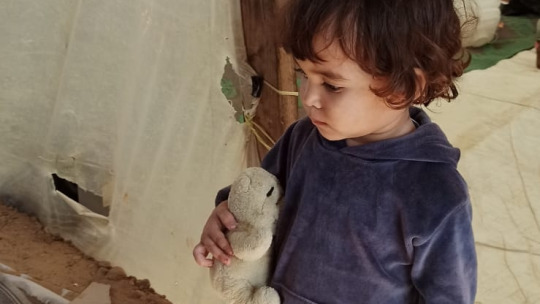#Vue essentials
Explore tagged Tumblr posts
Note
I remember you mentioning not wanting him to be another young viera, but how old do you headcanon Dancing Green to be? I'm curious to hear all your headcanons about him tho (about his age *and* anything else).
Sorry it's taken me so long to answer this!! At first I wanted to marinate him a little longer but then I decided to just wait till the spoiler ban was up so I could talk freely without worry!! That said all information proceeding is going to be all my own headcanons! Also want to give a big shout out to my friend Manda who listened to me blab nonstop about this Green menace and I owe so much to for their input here and there!!

I've kinda spoken about this before but I don't tend to really give exact ages for my viera characters because after a certain point of living for centuries I imagine it all starts to blend and they themselves would have a much different viewing on it then we would. I tend to think of it more in terms of like infant/child/teen/young adult/adult/elder like phases of life. That said, after thinking a lot on it I like the idea that if he were a pre dome baby (I'm coming around to post too negl..) I would say probably in his 30's. I don't think he was too old when the Dome appeared around 7 or 8 at most. I say this because I would like him to be old enough to remember what life was like before as it's important to my characterization of him and who he is/what shapes him. I'm coming around to post dome for the simple fact rotating him and Eren together in my mind, and especially with Tavi thrown in there, there's so much room for exploration!! I was talking to my friend Manda the other night and was formulating this idea of using the three characters to show the effects of losing your home to an imperialist machine like they all three did. Tavi who lost it metaphorically because she left to fight against Garlean occupation in whatever way she could and in so doing, though her home was saved from it she lost it all the same as she can never go back. She's in a sense the "pre" person who's experienced this and knows the sacrifice and trauma of it. Erenville is really the "present" as he's in real time lost his entire home and we see the trauma unfold and how it affects him and essentially in a blink of an eye makes him a relic of a bygone era and how he would cope with that. Then you'd have DG who's the "post" he's the product of growing up in a society that's been alienated and fractured. Like I said there's so much to be explored there!! But, but, but! On to other stuff lol
In my Headcanon city his town was lost during the merge and he only has a few surviving members (I like the idea of him having a younger sibling left tbh) and grew up in the Outskirts and left when he became old enough to go live in Solution 9 due to there not being many opportunities out there. I imagine he felt very isolated and lonely and was taking whatever work he could find and while walking through True Vue passed by a disco and saw these people congregated together in this space that was so lively and focused solely on the now and joy and was enraptured. After going there he starts playing up his persona in a bid to fit in due to not wanting to feel alone anymore and it being a great outlet for his love of dancing. I like to think that since he was a young child he loved to dance and that he was nicknamed "frog" due to his leggy stature (he's max height after all!) and (this one goes specifically to manda bc it's just so cute) and he was always "dancing and hopping around." This is why he chose the toad for his feral soul! We can glean from his clothes he's obviously quite proud of being Shetona and wears it in the most flamboyant colors possible which I love. I do think he’d keep some off the shetona housing items mentioned in game during the DoL quests in his home. When I finally got my hands on crimes and popped open the hood on him I noticed they gave him the eye option that gives a smoky look around his eyes which I think is a very smart choice as it looks like dark circles around his eyes and could give off the impression of someone running themselves ragged to maintain the lifestyle he is. I do think it's that but also as I noticed when I was looking at him in gpose it looks a lot like smudged eyeliner too

so I was like "hell yeah add that to the list." I also think he paints his fingernails (metallic green ofc) I also knew from the start his hair was from the new neon colors they implemented in Sol9 and got curious on what his natural color is so played around and I really love a darker green for him tbh!

He would feel it needed to be more flamboyant and go neon lmao man who moved to da big city and bleached his hair ....
For the reason he joined Arcadion I think he'd play it off as like wanting to be rich and party the rest of his days away but the promise of having a set future and one he could take care of what remaining family he has left in the outskirts (as it's very dangerous out there and wants to get them out of there) with it. I do wonder what makes him feel as though he's not enough on his own though!! I really hope we'll eventually get a bone thrown to us someday on that. I do think he tends to be rather lonely and is actually quite quiet when out of "performer" mode. Also I love the idea of him being very into music and he makes it himself although he's too insecure about his original stuff to put it out there but he does mix his own music for his fights!
And I think that's about all I have outside of ship stuff so I hope you enjoyed!!!(You when you ask for headcanons and I throw a dictionary at you ...LMAO SORRY!!)

22 notes
·
View notes
Text
73 Yards is a good concept but I think I know the reason it's not gonna stick with me like similar episodes
Spoilers under cut
I called it from the trailer that the old woman would be an older Ruby. The framing alone reminded me of when Amy and Rory see their older selves waving from far away in S5. So knowing that was coming I was hoping the pay off would give me a little bit more to surprise me.
It just didn't. Older Ruby stopped Younger Ruby from doing the thing and the timeliness got fixed. And outside of an odd sense of de ja vue, she nor anyone else remembers what happened.
This a trope I really dislike in time travel stories like this because my feeling is, if the characters aren't going to remember it, why should the audience? It's kinda like the "and it was all a dream" twist. Except even that I don't get as bothered by if the person has grown or changed from having the dream, for example "there's no place like home".
Now compare this to similar episodes where Doctor Who has done stories involving timeliness crossing etc - Blink, the Girl Who Waited and Turn Left. Those all ended with a happy resolution but there were consequences that weren't fully undone. Blink has a ton of people's lives screwed up and 'killed' off screen. The Girl Who Waited manages to save Amy before she can become like old Amy but at the cost of old Amy sacrificing herself and the trauma she went through, and the effect that has on the Doctor and Rory who have to carry on knowing what happened. Turn Left has Donna stopping herself making the wrong choice and resetting things but it's implied that an actual parallel world was created from Donna's first choice that still existed and also she keeps some memories from that world, which also carry on into the series finale. I'll also mention Heaven Sent because there you have the Doctor going through this massive trauma for billions of years but it keeps getting reset and he only remembers a little bit each time. Except even then he is partly aware there are other versions of him before and after who are continuing this struggle and he has to carry that with him into Hell Bent.
73 Yards could end up linking into more stories later on but as it stands, that journey that Ruby went on all those years and what she had to go through is essentially erased. Maybe there will be a lingering sensation for her like a bad dream but I suspect Russel is going to want this to be his new Midnight and not answer any questions ever. Which is fine, I love that about Midnight. But while we didn't get answers about Midnight, we still had the Doctor having to remember what happened and being scarred from it. In 73 Yards we get neither answers nor consequences so it just leaves me shrugging my shoulders, like okay that was a thing.
Was beautifully shot though and the first part where Ruby is just in Wales was really chilling, it's when they took the story back to London it lost me.
22 notes
·
View notes
Text
💰 Help My Family Rebuild Their Lives in Gaza – Your Support Matters🎁
My name is Anwar Mutawe
specifically from the Nuseirat refugee camp. As you know, we have been in a war since the beginning of October 7th. We are a family of nine. We were forced to evacuate our house after it was destroyed, and we couldn't take anything from it. We have been displaced four times, and now we live in a tent below the minimum requirements for basic life. The impact on my immediate family has been profound. Stripped of almost everything, we fled our home with nothing but the clothes on their backs and scant provisions. Upon their return, we were met with the devastating sight of our once-secure dwelling, now a mere shell of its former self, half-destroyed by conflict. Our situation has reached an unprecedented level of despair. Compounding matters, my mother's health has taken a turn for the worse, necessitating urgent medical attention outside of Gaza. In our time of dire need, we humbly seek your compassion and support. Your generosity would enable us to rebuild our shattered home, procure basic necessities such as clothing and essentials, and most importantly and go out gaza, provide my mother with the medical care she so desperately requires. All we ask for is the opportunity to regain a semblance of normalcy and live with dignity once again, just like any other family in the world. Your contribution, no matter how small, would make an immeasurable difference in our lives. From the depths of our hearts, we extend our heartfelt gratitude for your kindness and consideration.
Help Us Rebuild & Heal – Your support can provide shelter, essentials, and urgent medical care for my mother. Please donate today and make a difference.
Je m'appelle Anwar Awad, et je réside actuellement en dehors de la bande de Gaza, ayant récemment pris la difficile décision de partir. Je m'adresse à vous à la lumière des défis continus auxquels sont confrontées des familles comme la mienne en raison des circonstances tumultueuses à Gaza. L'impact sur ma famille proche a été profond. Privés de presque tout, ils ont fui leur domicile avec rien d'autre que les vêtements sur le dos et des provisions minimes. À leur retour, ils ont été accueillis par la vue dévastatrice de notre habitation autrefois sécurisée, maintenant réduite à une simple coquille de son ancien moi, à moitié détruite par le conflit. Notre situation a atteint un niveau de désespoir sans précédent. En outre, la santé de ma mère s'est détériorée, nécessitant des soins médicaux urgents en dehors de Gaza. Dans notre période de besoin urgent, nous sollicitons humblement votre compassion et votre soutien. Votre générosité nous permettrait de reconstruire notre maison dévastée, de procurer des nécessités de base telles que des vêtements et des produits essentiels, et surtout, de fournir à ma mère les soins médicaux dont elle a désespérément besoin. Tout ce que nous demandons, c'est l'opportunité de retrouver un semblant de normalité et de vivre avec dignité une fois de plus, comme n'importe quelle autre famille dans le monde. Votre contribution, aussi modeste soit-elle, ferait une différence incommensurable dans nos vies. Du fond de nos cœurs, nous exprimons notre gratitude sincère pour votre gentillesse et votre considération."
Stand With Us in Our Time of Need – Every contribution, no matter how small, brings us closer to regaining dignity and stability. Click here to support our family.
اسمي أنور مطاوع، وأنا من مخيم النصيرات بالضبط. كما تعلمون، نحن في حرب منذ بداية السابع من أكتوبر. نحن عائلة مكونة من تسعة أفراد. تم إجبارنا على إخلاء منزلنا بعد تدميره، ولم نتمكن من أخذ أي شيء منه. لقد تم نزوحنا أربع مرات، والآن نعيش في خيمة تحت الحد الأدنى لمتطلبات الحياة الأساسية.كان للأوضاع الصعبة تأثيراً عميقاً على عائلتي المباشرة. فقد هاجرنا من منزلنا تاركين خلفنا كل شيء، ولم نكن نحمل سوى الملابس التي نرتديها وقليل من الإمدادات. عند عودتنا، واجهنا مشهداً مدمراً لمنزلنا الذي كان آمناً مرة واحدة، ولكنه الآن مجرد قشرة من ذاته، نصف مدمرة بسبب النزاع. لقد وصلت حالتنا إلى مستوى من اليأس غير المسبوق. وفي ظل تفاقم الأمور، تدهورت حالة صحة والدتي، مما استدعى العناية الطبية العاجلة خارج قطاع غزة.في وقتنا هذا من الحاجة الماسة، نطلب بتواضع تعاطفكم ودعمكم. ستمكنكم كرمتكم من إعادة بناء منزلنا المهدم، وتأمين الاحتياجات الأساسية مثل الملابس والضروريات، والأهم من ذلك كله، تو��ير الرعاية الطبية لوالدتي التي تحتاجها بشدة. كل ما نطلبه هو الفرصة لاستعادة قدر من الطبيعية والعيش بكرامة مرة أخرى، تماماً كأي عائلة أخرى في العالم. ستحدث مساهمتكم، مهما كانت صغيرة، فرقاً لا يمكن قياسه في حياتنا. نعبر لكم من أعماق قلوبنا عن شكرنا وتقديرنا لطيبتكم واهتمامكم.
Stand With Us in Our Time of Need – Every contribution, no matter how small, brings us closer to regaining dignity and stability. Click here to support our family.
Mein Name ist Anwar Mutawe, speziell aus dem Flüchtlingslager Nuseirat. Wie Sie wissen, sind wir seit Anfang des 7. Oktober im Krieg. Wir sind eine Familie von neun Personen. Wir wurden gezwungen, unser Haus zu evakuieren, nachdem es zerstört worden war, und wir konnten nichts daraus mitnehmen. Wir wurden viermal umgesiedelt, und jetzt leben wir in einem Zelt unter den Mindestanforderungen für ein grundlegendes Leben. Die Auswirkungen auf meine unmittelbare Familie waren tiefgreifend. Fast alles wurde uns genommen, und wir flohen mit nichts als den Kleidern auf dem Leib und spärlichen Vorräten aus unserem Zuhause. Bei unserer Rückkehr wurden wir mit dem verheerenden Anblick unseres einst sicheren Zuhauses konfrontiert, das jetzt nur noch eine leere Hülle seiner früheren Selbst ist, halb zerstört durch den Konflikt. Unsere Situation hat ein beispielloses Maß an Verzweiflung erreicht. Darüber hinaus hat sich der Gesundheitszustand meiner Mutter verschlechtert, was dringende medizinische Hilfe außerhalb von Gaza erforderlich macht. In unserer Zeit der dringenden Notlage suchen wir auf demütige Weise Ihre Mitgefühl und Unterstützung. Ihre Großzügigkeit würde es uns ermöglichen, unser zerstörtes Zuhause wieder aufzubauen, grundlegende Notwendigkeiten wie Kleidung und Essentials zu beschaffen, und vor allem, meiner Mutter die dringend benötigte medizinische Versorgung zu ermöglichen. Alles, was wir bitten, ist die Möglichkeit, wieder ein gewisses Maß an Normalität zu erlangen und wieder mit Würde zu leben, wie jede andere Familie auf der Welt. Ihr Beitrag, egal wie klein, würde einen unermesslichen Unterschied in unseren Leben machen. Aus tiefstem Herzen möchten wir Ihnen für Ihre Freundlichkeit und Ihr Verständnis danken."
Stand With Us in Our Time of Need – Every contribution, no matter how small, brings us closer to regaining dignity and stability. Click here to support our family.
Mijn naam is Anwar Mutawe, specifiek uit het vluchtelingenkamp Nuseirat. Zoals u weet, zijn we sinds het begin van 7 oktober in oorlog. We zijn een gezin van negen personen. We werden gedwongen ons huis te evacueren nadat het was vernietigd, en we konden niets meenemen. We zijn vier keer ontheemd geraakt en nu leven we in een tent onder de minimale vereisten voor een basisleven. De impact op mijn naaste familie was diepgaand. Bijna alles werd hen ontnomen, ze vluchtten hun huis uit met niets dan de kleren aan hun lijf en schamele voorraden. Bij hun terugkeer werden ze geconfronteerd met het verwoestende gezicht van ons eens zo veilige huis, nu slechts een schim van zijn vroegere zelf, half verwoest door conflict. Onze situatie heeft een ongekend niveau van wanhoop bereikt. Bovendien is de gezondheid van mijn moeder verslechterd, wat dringende medische hulp buiten Gaza noodzakelijk maakt. In onze tijd van nijpende nood zoeken we nederig uw mededogen en steun. Uw vrijgevigheid zou ons in staat stellen ons verwoeste huis te herbouwen, basisbehoeften zoals kleding en essentiële benodigdheden aan te schaffen en, het allerbelangrijkst, mijn moeder te voorzien van de broodnodige medische zorg. Alles wat we vragen, is de mogelijkheid om weer een zekere mate van normaliteit te herwinnen en weer met waardigheid te leven, net als elk ander gezin ter wereld. Uw bijdrage, hoe klein ook, zou een onmeetbaar verschil maken in ons leven. Vanuit de diepten van ons hart willen we u bedanken voor uw vriendelijkheid en overweging."
Be the Light in Our Darkness – After losing everything, we need your compassion to rebuild our home and future. Join us in this fight for survival.






#RebuildGaza#SupportGazaFamilies#GazaRelief#DonateForGaza#HelpGazaRebuild#GazaNeedsYou#GazaSolidarity#RebuildLivesInGaza#GazaHumanitarianAid#TogetherForGaza#crowdfunding#donations#fundraising#gofundme
5 notes
·
View notes
Text
JavaScript
Introduction to JavaScript Basics
JavaScript (JS) is one of the core technologies of the web, alongside HTML and CSS. It is a powerful, lightweight, and versatile scripting language that allows developers to create interactive and dynamic content on web pages. Whether you're a beginner or someone brushing up on their knowledge, understanding the basics of JavaScript is essential for modern web development.
What is JavaScript?
JavaScript is a client-side scripting language, meaning it is primarily executed in the user's web browser without needing a server. It's also used as a server-side language through platforms like Node.js. JavaScript enables developers to implement complex features such as real-time updates, interactive forms, and animations.
Key Features of JavaScript
Interactivity: JavaScript adds life to web pages by enabling interactivity, such as buttons, forms, and animations.
Versatility: It works on almost every platform and is compatible with most modern browsers.
Asynchronous Programming: JavaScript handles tasks like fetching data from servers without reloading a web page.
Extensive Libraries and Frameworks: Frameworks like React, Angular, and Vue make it even more powerful.
JavaScript Basics You Should Know
1. Variables
Variables store data that can be used and manipulated later. In JavaScript, there are three ways to declare variables:
var (old way, avoid using in modern JS)
let (block-scoped variable)
const (constant variable that cannot be reassigned)
Example:
javascript
Copy code
let name = "John"; // can be reassigned const age = 25; // cannot be reassigned
2. Data Types
JavaScript supports several data types:
String: Text data (e.g., "Hello, World!")
Number: Numeric values (e.g., 123, 3.14)
Boolean: True or false values (true, false)
Object: Complex data (e.g., { key: "value" })
Array: List of items (e.g., [1, 2, 3])
Undefined: A variable declared but not assigned a value
Null: Intentional absence of value
Example:
javascript
Copy code
let isLoggedIn = true; // Boolean let items = ["Apple", "Banana", "Cherry"]; // Array
3. Functions
Functions are reusable blocks of code that perform a task.
Example:
javascript
Copy code
function greet(name) { return `Hello, ${name}!`; } console.log(greet("Alice")); // Output: Hello, Alice!
4. Control Structures
JavaScript supports conditions and loops to control program flow:
If-Else Statements:
javascript
Copy code
if (age > 18) { console.log("You are an adult."); } else { console.log("You are a minor."); }
Loops:
javascript
Copy code
for (let i = 0; i < 5; i++) { console.log(i); }
5. DOM Manipulation
JavaScript can interact with and modify the Document Object Model (DOM), which represents the structure of a web page.
Example:
javascript
Copy code
document.getElementById("btn").addEventListener("click", () => { alert("Button clicked!"); });
Visit 1
mysite
Conclusion
JavaScript is an essential skill for web developers. By mastering its basics, you can create dynamic and interactive websites that provide an excellent user experience. As you progress, you can explore advanced concepts like asynchronous programming, object-oriented design, and popular JavaScript frameworks. Keep practicing, and you'll unlock the true power of JavaScript!
2 notes
·
View notes
Text
11 Ventôse an 232 (1er mars 2024)

🇨🇵 Le 11 Ventôse, dans le calendrier républicain français, correspond généralement au 1er mars dans le calendrier grégorien. Cette journée est connue comme la
"journée de la herse".
La herse est un outil agricole utilisé pour briser les mottes de terre et niveler le sol après le labour, préparant ainsi le terrain pour la plantation des semences. Le 11 Ventôse était donc dédié à cette étape cruciale du processus agricole.
Après le travail de la bêche, qui consiste à retourner la terre, vient l'étape de la herse pour affiner la surface du sol, améliorer sa structure et favoriser une meilleure répartition des éléments nutritifs. Cela permet également de faciliter la germination des graines et la croissance des plantes.
Ainsi, le 11 Ventôse représentait une journée où les agriculteurs se concentraient sur la préparation minutieuse des champs en vue des futures récoltes. C'était une étape essentielle dans le cycle agricole, soulignant l'importance du travail du sol pour assurer le succès des cultures et la sécurité alimentaire de la communauté.
***
🇬🇧/🇺🇲 On the French Republican calendar, the 11th Ventôse generally corresponds to the 1st of March in the Gregorian calendar. This day is known as the "day of the harrow".
The harrow is an agricultural tool used to break up clods of soil and level the ground after plowing, thus preparing the soil for seed planting. The 11th Ventôse was dedicated to this crucial step in the agricultural process.
After the work of the spade, which involves turning over the soil, comes the harrowing stage to refine the surface of the soil, improve its structure, and promote a better distribution of nutrients. This also helps facilitate seed germination and plant growth.
Thus, the 11th Ventôse represented a day when farmers focused on meticulously preparing the fields for future harvests. It was an essential step in the agricultural cycle, highlighting the importance of soil work in ensuring the success of crops and the food security of the community.
#france#revolution#recolutionnaire#calendrier#République#républicain#grégorien#calendrier républicain#french republican calendar#calendrier républicain français#1er mars#march 1st#Ventôse#11Ventôse
11 notes
·
View notes
Note
Have you learned any new fun facts about cars recently?
Of course!!!
Just today:
I learned that the Golf Country (wicked factory off road version of the Mk2 Golf) was lifted over 4 inches for a total of around 7 inches of ground clearance!


I learned the absolutely mental Cobalt SS was essentially a parts bin special -they had a powerful 4 cylinder from the Saturn Ion Red Line and figured they'd put it in the less weird Cobalt and people would care, which they did- and that its epoch-making 260hp powertrain was only a later upgrade -again, borrowed from another car, the Pontiac Solstice GXP- once the original engine no longer met emission requirements. And that it had a sedan version!!!


And, while writing this post, I looked for details on how this lapped the King-Daddy, longest and most gruelling monster of all circuits that is the Nürburgring faster than the all-wheel-drive six-figure Japanese demigod that is the Skyline GT-R, and found out about the popular misconception that this refers to the R34 Nissan Skyline (right), to date the most coveted and sought after, whereas it actually refers to the R32 (left), a prior version -though not much less groundbreaking in its own time- and that the nonetheless staggering feat may largely be attributable to tire formulations having vastly improved between 1990 and 2008.


I learned of the Ford Transit Sportvan, a confusingly diesel sporty? version of the Ford Transit!


Hell, I learned about a small 20s brand I didn't even know existed!
I find out new things about cars every week, and that's not every day just because most days I run out of time to read and listen and browse all the car-related content I would want to (hence me writing this at 2:30AM, cough cough). Every model has an intricate story usually originating years before its birth, thousands of parts, usually dozens of variations year over year, mountains of media created around it and thousands of examples that have gone around to be featured in movies, owned by celebrities, and participate in history in other thousands of minuscule little ways. Multiply this for thousands of models worldwide and then multiply that for a century and a half. However narrow your area of interest, if you think you know as much as most of the car trivia within it you are absolutely a fool.
Oh wait you were probably asking for an actually fun fact.
Oops.
Well, still today, I learned that our dear Saturn Vue, remember our dear Saturn Vue? Well, not @makenoplans's, the second generation, it turns out that 1. at fucking least it drove well and 2. it died along with Saturn itself when GM went bankrupt and a clause stipulated for the government bailout was to kill three of its brands - Saturn being one of their least successful at the time I WONDER FUCKING WHY I WONDER IF THERE WAS ANYTHING ONE COULD HAVE DONE TO SAVE IT LIKE NOT EVISCERATING ALL LIFE OUT OF IT AND TURN ITS CORPSE INTO AN AMERICAN DISTRIBUTOR FOR A MEDIOCRE GERMAN CAR BRAND i am calm i am calm i am digressing. Well they'd relatively speaking just started making the second gen Vue in Mexico and they were like aw cmon do we really have to stop selling it so soon? And so they just fucking. Used the "Chevrolet Captiva Sport" branding it was sold with in South America to sell it to rental companies. It's basically like a fake ID but it's no faker than the one you started off with.
Oh! And a bit less recently I found out that bafflingly you could get the first generation Honda Civic with three different trunk doors - seen here in increasing order of price and sense.

#saturn vue#chevrolet captiva sport#vw golf country#chevrolet cobalt ss#saturn ion red line#nissan skyline r34#nissan skyline r32#ford transit sportvan#honda civic
14 notes
·
View notes
Text
SIE考試代考!SIE考試保分/替考/包過/高分解決方案!
對於正在準備 SIE(Securities Industry Essentials)證券入門考試的考生來說,這場全英文、專業性強的測驗,往往成為進入金融業的第一道高牆。 如果你也正面臨以下狀況: 英文不夠流利,讀題都吃力 沒時間備考、不熟金融概念 已經嘗試自己考但總是過不了 想找SIE考試代考或SIE考試保分服務,卻怕被封號 那你一定要看這篇由專業團隊 SimonExam 出品的全流程解說。 一、SIE考試替考、代考是什麼?能做到嗎? SIE目前支援 Online Remote Exam(線上家考),通常透過 Pearson VUE 平台進���,具備: 人臉識別監控 攝像頭 + 麥克風 AI 行為追蹤 全程螢幕共享 防外掛、防虛擬機、防遠端操控系統 若使用傳統作弊方法或低端代考,極容易被偵測風險系統攔截並封鎖帳號。 📌…
0 notes
Text
Virginia Board of Nursing CNA Certification: Your Essential Guide to Starting a Nursing Career
Virginia Board of Nursing CNA Certification: Your Essential Guide to Starting a Nursing Career
Introduction
Embarking on a career in nursing is both a noble and rewarding journey. if you’re interested in entering teh healthcare field in Virginia, obtaining a Certified nursing Assistant (CNA) certification through the Virginia Board of Nursing is a critical first step. This comprehensive guide will walk you through the essential information, requirements, benefits, and practical tips to help you achieve your CNA certification efficiently.Whether you’re a recent graduate or considering a career change, understanding the ins and outs of the Virginia CNA certification process ensures you start your nursing career on the right foot.
What Is a CNA and Why Is Certification Meaningful?
A Certified Nursing Assistant (CNA) plays a vital role in delivering direct patient care under the supervision of registered nurses (rns) and licensed practical nurses (LPNs). CNAs assist with daily activities such as bathing, dressing, feeding, and mobility, making them indispensable in healthcare settings like hospitals, nursing homes, and assisted living facilities.
Obtaining CNA certification through the Virginia Board of Nursing not only validates your skills and knowledge but also enhances your employability, opens doors to further nursing education, and ensures you adhere to professional standards and safety regulations.
Virginia CNA Certification: Requirements & Eligibility
Before pursuing CNA certification, it’s essential to confirm that you meet the eligibility requirements set forth by the Virginia Board of Nursing. Here’s a quick overview:
Age: typically, applicants must be at least 18 years old.
Education: High school diploma or GED equivalent.
Background Check: You must pass a criminal background check.
Training: Completion of an approved CNA training program.
Meeting these criteria is crucial to ensure a smooth certification process.
How to Choose an Approved CNA Training Program in Virginia
In Virginia, CNA training programs are approved by the Virginia Board of Nursing.Here’s how to select the right program:
Ensure the program is state-approved.
Check for comprehensive curriculum that covers essential skills and theory.
Verify hands-on clinical experiance included in the curriculum.
Consider program duration (typically 120 hours) and schedule flexibility.
review graduation and passing rates.
Popular options include community colleges, vocational schools, and healthcare training centers.
Steps to enroll:
Research available programs on the Virginia Board of Nursing website.
Apply directly to your chosen program.
Complete the training and pass the certification exam.
Virginia CNA Certification Exam: Your Pathway to Licensing
After completing an approved training program, the next step is to pass the Virginia CNA certification exam administered by Pearson VUE. The exam consists of two parts:
Written (or oral) exam: Tests knowledge on basic nursing skills,patient care,and safety protocols.
Skills demonstration: practical performance of common CNA tasks in a simulated setting.
Preparing thoroughly for both parts is key. Utilize practice tests, review training materials, and consider additional prep courses if necessary.
Registration Process
Step
Description
Apply for exam
Submit application via the Pearson VUE website.
Pay examination fee
Fees vary; check current pricing on official site.
Schedule your exam
Choose testing dates and locations convenient for you.
Pass the exam
Receive official certification upon successful completion.
Maintaining Your CNA Certification in Virginia
Becoming certified is just the beginning. Virginia CNAs must fulfill ongoing requirements to maintain their certification:
Renewal: Every two years, with renewal applications submitted online.
Continuing Education: Complete a minimum of 12 hours of approved continuing education credits each renewal period.
Work verification: Proof of employment as a CNA within the last 24 months.
failure to renew or meet requirements may result in suspension or loss of certification.
Benefits of Becoming a Certified Nursing Assistant in Virginia
Job Opportunities: High demand across Virginia healthcare facilities.
Career Pathways: Opportunities to advance to LPN or RN roles.
Skill Progress: Gaining valuable patient care experience.
Personal Fulfillment: Making a positive impact in patients’ lives.
Flexible Schedule: Opportunities for part-time or full-time work.
Investing in your CNA certification in Virginia sets the foundation for a rewarding healthcare career with long-term growth potential.
practical Tips for Aspiring CNAs in Virginia
Prepare early: Review course materials and practice skills regularly.
Utilize resources: take advantage of study groups, online tutorials, and instructor support.
Stay organized: Keep track of requirements,deadlines,and documentation.
Gain first-hand experience: Volunteer or work as a nurse aide-in-training for added exposure.
Maintain a positive attitude: Compassion and professionalism are key qualities for success.
Case Study: From Student to Certified CNA in Virginia
Alice, a recent graduate from a Virginia community college, enrolled in an approved CNA training program. She dedicated herself to her coursework, practiced skills diligently, and scheduled her certification exam promptly. After passing the exam on her first attempt, Alice obtained her CNA license through the Virginia Board of Nursing. Today, she works at a local nursing home, providing compassionate care to residents and considers her certification a stepping stone toward becoming a licensed practical nurse (LPN).
This example illustrates how proper planning, preparation, and commitment can lead to a successful nursing career in Virginia.
conclusion
Starting your nursing career through the virginia Board of Nursing CNA certification is an impactful step toward entering the healthcare profession.By understanding the certification process, choosing the right training program, passing the certification exam, and maintaining your licensure, you can enjoy a fulfilling career that offers growth, stability, and the opportunity to make a difference in people’s lives. Whether you’re just beginning or looking to advance your healthcare journey, becoming a CNA in Virginia is a rewarding choice that opens numerous doors in the dynamic world of nursing.
Take the first step today, invest in your education, and be part of the essential workforce dedicated to compassionate patient care in Virginia!
https://trainingcna.org/virginia-board-of-nursing-cna-certification-your-essential-guide-to-starting-a-nursing-career/
0 notes
Text
Discover How to Find Sterile Processing Exam Near CA and Get CNA Programs in Vallejo Today
If you're looking to launch a rewarding healthcare career in California, you're not alone. With increasing demand for trained professionals, roles like Sterile Processing Technicians and Certified Nursing Assistants (CNAs) are more important than ever. Whether you're planning to find sterile processing exam near CA or want to get CNA programs in Vallejo, this guide will walk you through how to make the right move for your future.
Why Consider a Career in Sterile Processing or CNA?
Healthcare is one of the fastest-growing industries in the U.S., and California is a hub for hospitals, clinics, and long-term care facilities. Two vital support roles in this sector are Sterile Processing Technicians and CNAs. Both jobs offer stability, excellent career growth, and the opportunity to make a direct impact on patient care.
Sterile Processing Technicians are the backbone of infection control in healthcare settings. They clean, sterilize, and maintain surgical tools and instruments.
Certified Nursing Assistants (CNAs) provide essential daily care for patients, supporting nurses in hospitals, nursing homes, and private care facilities.
How to Find Sterile Processing Exam Near CA
If you're pursuing a career as a Sterile Processing Technician, you must pass a certification exam to become competitive in the job market. Here’s how to find sterile processing exam near CA and prepare effectively:
1. Choose a Recognized Certification
The most recognized certification for sterile processing is the Certified Registered Central Service Technician (CRCST), offered by the Healthcare Sterile Processing Association (HSPA).
Other reputable certifications include:
CBSPD (Certification Board for Sterile Processing and Distribution)
IAHCSMM (International Association of Healthcare Central Service Materiel Management – now part of HSPA)
2. Search for Exam Centers
To find sterile processing exam near CA, visit the HSPA or CBSPD websites and use their testing location tools. Testing centers are located throughout California, including major cities like:
Los Angeles
San Francisco
Sacramento
San Diego
Many exams are conducted through Prometric or Pearson VUE, both of which offer online scheduling and location search features.
3. Enroll in a Training Program
Before taking the exam, consider enrolling in a sterile processing training program. Many community colleges and vocational schools across California offer hands-on training, including externships in real medical facilities.
Look for programs that:
Prepare you for CRCST or CBSPD exams
Offer flexible class schedules (evening/weekend)
Include clinical experience
Where to Get CNA Programs in Vallejo
Vallejo, located in the San Francisco Bay Area, is home to several reputable institutions offering CNA programs. If you’re aiming to get CNA programs in Vallejo, consider the following steps:
1. Check State-Approved Programs
In California, CNA programs must be approved by the California Department of Public Health (CDPH). You can view an updated list of state-approved CNA programs on the CDPH website.
Top programs in and near Vallejo include:
Solano Community College
Vallejo Adult School
North Bay CNA Training Center
These institutions offer quality training, exam prep, and even job placement support after graduation.
2. Understand the Program Structure
Most CNA programs in Vallejo include:
60–100 hours of classroom instruction
100+ hours of supervised clinical training
CPR certification
Exam preparation for the California Nurse Assistant Competency Examination
Programs typically last between 6 to 12 weeks, depending on part-time or full-time enrollment.
3. Explore Financial Aid Options
Many CNA students in Vallejo qualify for financial assistance, especially through:
Workforce development grants
Scholarships
Federal financial aid (FAFSA)
Some programs even offer free CNA training if you commit to working with their affiliated healthcare facility for a designated time.
Benefits of Combining CNA and Sterile Processing Knowledge
Although CNA and Sterile Processing are separate fields, having credentials in both can open more doors. Many professionals begin as CNAs and then transition into sterile processing or vice versa. Here’s why combining both skills is a smart move:
Broader employment options in various healthcare settings
A deeper understanding of patient care and surgical support
Opportunities for higher pay and leadership roles
Final Thoughts
If you’re serious about entering the healthcare workforce, now is the perfect time to find sterile processing exam near CA or get CNA programs in Vallejo. These entry-level positions can serve as stepping stones to even greater roles like Licensed Vocational Nurse (LVN) or Surgical Technologist. With accredited training, proper certification, and a commitment to excellence, your healthcare journey can begin today.
Whether you’re aiming to clean surgical tools with precision or provide bedside care with compassion, California offers numerous pathways for success. Start exploring your options, enroll in a program, and take that first confident step toward a fulfilling healthcare career.
0 notes
Text
Total Your Path to Nursing: How to Obtain Your Arkansas CNA License Today
Complete Your Path to Nursing: How to Obtain your Arkansas CNA License Today
Embarking on a career in nursing is an exciting journey filled with opportunities to make a real difference in people’s lives. One of the most accessible and essential stepping stones toward becoming a registered nurse or advanced healthcare professional in Arkansas is obtaining your Certified Nursing Assistant (CNA) license. If you’re wondering how to get your Arkansas CNA license and start working in healthcare quickly, you’ve come to the right place. This extensive guide will walk you through every step needed to complete your path to nursing effectively and efficiently.
Why Become a Certified Nursing Assistant in Arkansas?
Choosing to become a CNA in Arkansas offers numerous benefits, including:
Fast entry into the healthcare workforce
Opportunities for experienced CNAs to advance in nursing
Flexible work schedules in diverse healthcare settings
Personal gratification by helping patients and their families
A stepping stone toward becoming a Licensed Practical Nurse (LPN) or Registered Nurse (RN)
Understanding the requirements to obtain Your Arkansas CNA License
Before you can practice as a CNA in Arkansas, you must fulfill specific eligibility criteria set by the Arkansas State Board of Nursing. Here’s what you need:
Basic Eligibility Requirements
Be at least 18 years old
Complete a state-approved CNA training program
Pass the Arkansas CNA competency exam
Submit a criminal background check
Have no disqualifying criminal convictions
Step-by-Step Guide to Getting Your Arkansas CNA License
1. Enroll in a State-Approved CNA Training Program
The first step is to select an approved CNA training program in Arkansas. These programs are offered at vocational schools, community colleges, and some healthcare facilities. The program usually includes coursework in anatomy, patient care, and CPR, alongside clinical practice hours.
2. Complete the CNA Training Program
Most Arkansas CNA training programs last between 4 to 12 weeks,depending on the curriculum and scheduling. During this phase, you’ll gain hands-on experience and learn vital skills necessary for patient care.
3. Register for the Arkansas CNA Competency Exam
After completing ��your training, you must register with Pearson VUE to take the CNA exam, which comprises a written test and a skills demonstration.You can register online through the Arkansas State Board of Nursing website or via Pearson VUE.
4. Prepare for the Exam
Review all course materials, practice clinical skills, and consider taking exam prep courses to boost your confidence and readiness. Focus on understanding vital nursing skills, safety protocols, and patient rights.
5. Pass the CNA Competency Exam
The exam is designed to evaluate your knowledge and practical skills in a real-world setting. Passing both parts is essential to qualify for licensure in Arkansas.
6. Submit Your Application for Licensing
Once you pass your exams, submit your application for CNA licensure to the Arkansas State Board of Nursing along with the required documentation and fee.
7. Undergo a Criminal Background Check
Arkansas requires all CNA applicants to undergo a criminal background check. Ensure you provide accurate information and complete this step to avoid delays.
8.Receive Your Arkansas CNA License
After processing your application and verifying your credentials, the Arkansas Board will issue your CNA license, allowing you to practice legally within the state.
Practical Tips for a Smooth Certification Process
Start early: Research and choose a reputable training program
Stay organized: Keep track of deadlines and required documentation
Prepare thoroughly: Use practice exams and study guides
Network: Connect with instructors and fellow students for support
Maintain professionalism: Be punctual and attentive during clinical practice and testing
Benefits of becoming a Certified Nursing Assistant in arkansas
Transitioning from CNA to other healthcare roles is a common pathway. CNA certification not only opens immediate employment opportunities but also lays a solid foundation for future nursing education. Additionally,CNAs in Arkansas enjoy:
Competitive hourly wages
Job stability and demand in healthcare facilities
opportunities for specialization in geriatrics,pediatrics,or home health care
Work experience that strengthens nursing school applications
Case Study: From CNA to Nurse in Arkansas
Step
Experience
Certified Nursing Assistant
Gained practical patient care skills and clinical experience in long-term care
Continuing Education
Completed LPN prerequisites while working as a CNA
Advanced Nursing Program
Enrolled in LPN program,then transferred to RN degree
Licensed Registered Nurse
Now providing specialized patient care and pursuing further specialization
Final Thoughts: Your Next Steps Toward a Rewarding Healthcare career
Obtaining your Arkansas CNA license is your gateway to entering the healthcare industry and making a meaningful difference in people’s lives. By following the outlined steps, preparing diligently, and leveraging available resources, you can complete your CNA certification efficiently and start practicing legally in Arkansas. Remember, your journey to nursing begins with that first step – becoming a certified nursing assistant today!
Start planning your education, gather your documentation, and take proactive steps to achieve your healthcare goals. The demand for compassionate and skilled CNAs continues to grow across Arkansas, and your dedication can make a real difference in your community and your career future.
https://allcnaprograms.com/total-your-path-to-nursing-how-to-obtain-your-arkansas-cna-license-today/
0 notes
Text
Necessary Guide to Passing Your LPN Nursing Board Exam: Tips, Requirements & Resources
Essential Guide to Passing Your LPN Nursing board Exam: tips, Requirements & Resources
Embarking on your journey to becoming a Licensed Practical Nurse (LPN) is an exciting milestone. However, the pressure of passing the crucial LPN Nursing Board Exam can be daunting. This comprehensive guide will equip you with essential tips, clear requirements, and valuable resources to help you succeed. Whether you’re a first-time test-taker or looking to boost your confidence, this article provides the insights you ���need to ace the exam and start your rewarding nursing career.
Understanding the LPN Nursing Board Exam
What Is the LPN Nursing Board Exam?
The LPN Nursing Board Exam, often referred to as the NCLEX-PN, is a standardized test that all aspiring Licensed Practical Nurses must pass to obtain licensure. It evaluates your knowledge and skills essential to providing safe and effective patient care as a practicing LPN.
Exam Format and Content
The NCLEX-PN is a computer-adaptive test (CAT), which adjusts its difficulty based on your answers. The exam typically includes:
125-150 questions (including 15 experimental questions)
Time limit: Approximately 5 hours
Content areas: Safe and Effective Care, Health Promotion and Maintenance, Psychosocial Integrity, Physiological Integrity
Key Requirements for Taking the LPN Nursing Board Exam
Educational Qualifications
Completion of an accredited LPN program or vocational nursing program
Submission Process
Submit your application to the licensing board in your state or jurisdiction
Provide proof of graduation and criminal background checks
Exam Fees and Scheduling
Pay the required NCLEX fee (varies per state, generally around $200)
Schedule your test at a Pearson VUE testing center
Effective Tips to Prepare for the LPN Nursing Board exam
Develop a Study Plan
Create a structured study schedule that covers all exam topics. Break down your prep into weekly goals, and allocate more time to areas where you’re less confident.
Utilize Quality Study Resources
Review books: Use NCLEX-PN review books and practice tests
Online Practice Questions: Platforms offering simulated exams
Mobile Apps: Use dedicated NCLEX prep apps for on-the-go studying
Practice Test-Taking Strategies
Familiarize yourself with the exam format and question types
Practice answering questions within timed settings
Learn to identify keywords and eliminate incorrect options
Join Study Groups and Seek Support
Collaborate with peers, join online forums, or attend review classes. Sharing knowledge can reinforce learning and boost motivation.
Top Resources for LPN Nursing Board Exam Planning
Resource Type
Recommended Platforms
Description
Review Books
Saunders NCLEX-PN Prep, LPN Exam Prep Book
Comprehensive content review and practice questions
Online Practice Tests
Kahoot, UWorld, NCLEX Mastery App
simulated exams to gauge your readiness
Study Courses
Kaplan, NCSBN Learning Extension
Structured courses and instructor-led review sessions
Benefits of Proper Preparation
Increased confidence: Feel more prepared on exam day
Higher pass rates: Strategic studying maximizes your chances
Reduced anxiety: Familiarity with the test reduces stress
Practical Tips and Common Mistakes to Avoid
Never underestimate the importance of consistent study habits
Avoid cramming at the last minute; start early
Don’t ignore difficult topics-spend extra time on them
Stay calm and focused during the exam; practice relaxation techniques
Case Study: From Preparation to Success
Meet Lisa: A recent LPN graduate who struggled initially but turned her fortunes around by creating a detailed study plan, practicing daily, and participating in review courses. After three months of dedicated preparation,Lisa scored comfortably above the passing threshold and obtained her license on her first attempt. Her story emphasizes the importance of disciplined preparation and utilizing available resources effectively.
Final Thoughts and Conclusion
Passing your LPN Nursing Board Exam is a pivotal step toward starting your healthcare career.with thorough preparation, the right resources, and a positive mindset, you can confidently tackle the exam and achieve your goal of becoming a licensed practical nurse.Remember to stay organized, seek support when needed, and practice consistently. Your dedication and hard work will pave the way for a triumphant career in nursing.Good luck!
https://nursingcertificationcourses.com/necessary-guide-to-passing-your-lpn-nursing-board-exam-tips-requirements-resources/
0 notes
Text
How to Earn Your CNA Certification in Atlanta: A Step-by-Step Guide to Launch Your Healthcare Career
How to Earn Your CNA Certification in Atlanta: A Step-by-Step Guide to Launch Your Healthcare Career
Embarking on a career as a Certified Nursing Assistant (CNA) in Atlanta is an exciting pathway into the healthcare industry. With the demand for healthcare professionals on the rise, earning your CNA certification can open doors to meaningful work, professional growth, adn a rewarding career in patient care. If you’re wondering how to start, this complete, step-by-step guide will walk you through the essential requirements, training process, certification procedures, and practical tips to successfully launch your healthcare journey in atlanta.
Why Pursue CNA Certification in Atlanta?
Atlanta is a vibrant city with a growing healthcare sector. From hospitals and nursing homes to outpatient clinics and home health services, the demand for qualified CNAs is high. Some key benefits of obtaining your CNA certification include:
high Employment Opportunities: The healthcare industry in Atlanta regularly seeks qualified CNAs.
Entry-Level Position: CNA roles require minimal formal education to start.
Foundation for Career Advancement: CNA certification can be a stepping stone to further nursing education or specialized healthcare roles.
Competitive Salaries & Benefits: CNAs in Atlanta enjoy attractive pay and job security.
Step 1: Understand the CNA Requirements in Georgia
Before beginning your journey,ensure you meet Georgia’s specific requirements to become a CNA:
Age: Must be at least 18 years old.
Educational Background: High school diploma or equivalent (GED).
Background Check: Pass a criminal background check.
Health Screening: Up-to-date immunizations and health assessments.
English Proficiency: Ability to communicate effectively in English.
Step 2: Enroll in an Approved CNA Training Programme in Atlanta
Completing an approved CNA training program is a mandatory step. Look for programs accredited by the Georgia State Department of Community Health (DCH) or those approved by the Georgia Nurse Aide Registry.
Program Length: Typically 120 hours, including classroom instruction and clinical practice.
Where to Find Programs: Community colleges, vocational schools, healthcare facilities, and online programs with local clinicals.
Cost: Tuition varies; expect between $500 to $2,000 depending on the program.
Ensure that the program offers comprehensive training in vital skills such as patient care, infection control, basic nursing skills, and first aid.
Step 3: Prepare and complete Your CNA Training
Once enrolled, dedicate yourself to mastering the coursework and gaining hands-on clinical experience. Key topics usually include:
Basic nursing skills
Patient rights and interaction
Infection prevention and control
Vital signs and measuring techniques
Personal care and hygiene
Emergency procedures
During clinical rotations, you’ll work directly with patients under supervision, building practical skills necessary for real-world caregiving.
Step 4: Pass the Georgia Nurse Aide Competency Exam
After successfully completing your CNA training, you must pass the state-required competency exam to become certified. The exam consists of two parts:
Written Knowledge Test: Multiple-choice questions assessing your theoretical knowledge.
Skills Evaluation: Demonstrating essential nursing skills in a controlled surroundings.
Exam scheduling is handled through approved testing centers in Atlanta, such as Pearson Vue. Preparatory courses and practice tests are highly recommended to increase your chances of passing.
Step 5: Obtain Your CNA Certification in Atlanta
Upon passing the exam, your name will be entered into the Georgia Nurse aide Registry. You will receive your CNA certification, allowing you to work legally across Atlanta and the state of Georgia.
Remember, maintaining your certification requires:
working as a CNA for at least 8 hours every 24 months.
Completing mandatory continuing education (if applicable).
practical Tips for a Successful CNA Career in Atlanta
Volunteer or Gain Extra Experience: Volunteering at local hospitals or nursing homes can boost your skills and resume.
Stay Updated with State Regulations: Regularly review Georgia’s CNA requirements and guidelines.
Network with Healthcare Professionals: Join local CNA associations or online forums to connect and learn.
Cultivate Soft Skills: Empathy, patience, and communication are essential traits for success.
Case Study: From Student to certified CNA in Atlanta
Step
Action
Outcome
1
Enrolled in accredited CNA program at Atlanta Technical College
Completed training in 4 months & gained clinical experience
2
Passed the Georgia CNA certification exam
Obtained official CNA certification
3
Started working at a local nursing home
Gained practical experience, received positive feedback, and continued education
Conclusion
Becoming a Certified Nursing assistant in Atlanta is an accessible and highly rewarding pathway into the healthcare field. By understanding the licensing requirements, choosing an approved training program, passing the competency exam, and gaining practical experience, you can launch a meaningful career in patient care. Whether you’re seeking a first-time healthcare role or aiming to advance further, earning your CNA certification in Atlanta opens the door to endless opportunities in a thriving healthcare industry.
Ready to start your journey?
Explore approved CNA programs in Atlanta today and take the first step toward your rewarding healthcare career!
https://cnaclassesonline.net/how-to-earn-your-cna-certification-in-atlanta-a-step-by-step-guide-to-launch-your-healthcare-career/
0 notes
Text
HTML Interview Questions and Answers for Beginners in 2025

If you’re just starting your journey in web development, one of the first technologies you’ll encounter is HTML—the foundational language for creating web pages. Whether you're preparing for your first job interview or an internship opportunity, being confident in HTML interview questions and answers can set you apart from other candidates.
In this blog, “HTML Interview Questions and Answers for Beginners in 2025,” we’ve compiled the most relevant, updated, and beginner-friendly HTML questions that hiring managers are likely to ask this year. These questions are designed to not only test your basic understanding but also help you think critically about how HTML is used in real-world scenarios.
Why HTML Knowledge Is Crucial in 2025
HTML (HyperText Markup Language) remains the backbone of every website on the internet. Even with advancements in frameworks like React, Angular, and Vue, the core of all web development still starts with HTML. That’s why interviewers consistently assess your understanding of HTML—especially if you’re applying for roles like:
Front-End Developer
Web Designer
UI Developer
Full-Stack Developer (Entry-Level)
In 2025, as more companies move towards web-first experiences, HTML knowledge remains a must-have skill.
HTML Interview Questions and Answers for Beginners
Here’s a curated list of beginner-friendly HTML questions with simple yet effective answers to help you ace your interview.
1. What is HTML?
Answer: HTML stands for HyperText Markup Language. It is the standard markup language used to create web pages. HTML uses a set of elements (called tags) to define the structure and content of a webpage.
2. What are HTML tags and elements?
Answer: HTML tags are used to mark the beginning and end of an element. Example: <p> is an opening tag, and </p> is a closing tag. An HTML element includes the opening tag, content, and closing tag. Example: <p>This is a paragraph.</p>
3. What is the difference between HTML and HTML5?
Answer: HTML5 is the latest version of HTML. It introduces new tags (<article>, <section>, <video>, <audio>, etc.), supports audio/video embedding, and improves semantic structure and browser compatibility.
4. What is the role of the <head> and <body> tags in HTML?
Answer:
contains meta information about the document (title, links, scripts).
contains the visible content that displays in the browser window.
5. What is a semantic tag in HTML5?
Answer: Semantic tags describe the meaning of the content inside them. Examples include <header>, <footer>, <article>, <nav>, and <section>. They improve code readability and SEO.
6. What is the difference between <div> and <span>?
Answer:
is a block-level element used to group larger sections of content.
is an inline element used to group small chunks of content inside other elements.
7. What is the purpose of the alt attribute in the <img> tag?
Answer: The alt (alternative text) attribute provides a text description of the image, which is helpful for screen readers and when the image cannot be displayed.
8. How do you create a hyperlink in HTML?
Answer: Use the <a> tag. Example:
<a href="https://example.com">Visit Example</a>
9. How can you insert a list in HTML?
Answer: There are two types:
Ordered list () – for numbered items
Unordered list () – for bullet points
Example:
<ul> <li>HTML</li> <li>CSS</li> <li>JavaScript</li> </ul>
10. What is the use of the <form> tag in HTML?
Answer: The <form> tag is used to collect user input. Inside a form, you can use input fields, buttons, checkboxes, and other elements to capture data and send it to a server.
11. How do you add a comment in HTML?
Answer: HTML comments are written like this:
<!-- This is a comment -->
12. Can you nest one HTML element inside another?
Answer: Yes, HTML elements can be nested. Proper nesting is essential for the correct rendering of a page. Example:
<p>This is <strong>important</strong> text.</p>
13. What are empty elements in HTML?
Answer: Empty elements do not have closing tags. Example: <br>, <img>, <input>, <hr>
14. What is the purpose of the doctype declaration?
Answer: The <!DOCTYPE html> declaration tells the browser which version of HTML is being used and helps render the page correctly.
15. What are meta tags?
Answer: Meta tags provide metadata about the webpage, such as character encoding, viewport settings, keywords, and descriptions. They go inside the <head> section.
Example:
<meta charset="UTF-8"> <meta name="description" content="Learn HTML interview questions for beginners.">
Final Thoughts
HTML is not just about writing tags—it's about structuring content properly so browsers and users can understand it. By mastering the questions in this blog, "HTML Interview Questions and Answers for Beginners in 2025," you'll gain the confidence to answer any foundational HTML question thrown your way.
Here’s how to make the most of this guide:
Practice writing each tag and structure by hand Build small projects to test your understanding Review real-world examples of semantic HTML Stay updated with HTML5 best practices
Ready for the Interview?
Whether you're preparing for an internship, a junior developer role, or even freelance web design work, these HTML interview questions and answers for beginners are your starting point. Learn them, understand them, and practice explaining them clearly—that’s the key to acing your next interview in 2025.
#HTML interview Question#HTML interview Question for beginners#Interview question for freshers#python for beginners
0 notes
Text
Master the Code: How Java, Python, and Web Development Tutoring on MentorForHire Can Supercharge Your Tech Career
In a world powered by software, coding is no longer just a niche skill—it's a core competency. Whether you're looking to break into tech, ace a coding bootcamp, land your first junior developer job, or scale your expertise as a senior engineer, personalized mentoring makes a dramatic difference. That’s where MentorForHire.com comes in—a platform that connects you with industry professionals for hands-on Java Tutoring, Python Tutoring, and Web Development Tutoring.
Here’s how specialized tutoring in these key areas can accelerate your learning journey and help you achieve your software development goals.
Why One-on-One Coding Tutoring Beats Generic Online Courses
Self-paced tutorials and free courses are great for dipping your toes in—but when you're serious about growth, they often fall short. Why?
You don’t know what you don’t know.
Debugging can become a time-wasting nightmare.
Without accountability, progress slows down.
You’re not getting job-ready feedback from a real developer.
MentorForHire solves all of these problems by connecting you with real mentors who’ve worked in tech and know what it takes to succeed. Whether you're working on a class assignment, preparing for interviews, or building a full-stack project, you'll get tailored support.
Java Tutoring: Build Enterprise-Grade Skills from the Ground Up
Java isn’t just for beginners—it powers billions of devices, from Android apps to massive backend systems used in finance, healthcare, and e-commerce. If you're serious about software engineering, Java Tutoring offers a rock-solid foundation.
With a mentor, you can:
Understand core concepts like classes, inheritance, interfaces, and exception handling.
Master data structures and algorithms for whiteboard interviews.
Build scalable applications using Java frameworks like Spring and Hibernate.
Get help with unit testing, debugging, and version control.
Prepare for certifications like Oracle Certified Associate (OCA) and Oracle Certified Professional (OCP).
A mentor will not only explain the "how" of Java development but also the "why"—turning you from a coder into a software architect-in-training.
Python Tutoring: The Most Versatile Language in Tech
Python has become the go-to language for beginners and professionals alike because of its simplicity and power. Whether you want to get into automation, data science, machine learning, or back-end web development, Python Tutoring gives you the skills you need to thrive.
On MentorForHire.com, Python mentors can help you:
Write clean, efficient, and maintainable code.
Understand essential concepts like functions, loops, list comprehensions, and file I/O.
Use libraries like NumPy, pandas, Matplotlib, and scikit-learn for data analysis.
Build web apps with Flask or Django from scratch.
Automate tasks using Python scripts or integrate with APIs.
Whether you're solving LeetCode challenges or working on a startup prototype, personalized tutoring can take your Python skills to the next level.
Web Development Tutoring: Learn to Build the Web, Not Just Consume It
Today’s digital economy is built on the web—and web developers are in high demand across every industry. But with so many tools and frameworks, it’s easy to get overwhelmed. That’s where Web Development Tutoring comes in.
From front-end to back-end to full-stack, tutors on MentorForHire.com can guide you step-by-step:
Front-End Skills:
HTML, CSS, and JavaScript fundamentals
Responsive design using Flexbox and Grid
JavaScript frameworks like React, Angular, or Vue
Version control with Git and GitHub
Back-End Skills:
Node.js with Express or Java with Spring Boot
REST APIs and database integration (MySQL, MongoDB)
Authentication systems (OAuth, JWT)
DevOps basics: deploying apps with Heroku or AWS
You’ll work on actual projects like to-do lists, dashboards, or e-commerce stores—and get expert feedback every step of the way.
How MentorForHire Makes Learning Easier and Smarter
MentorForHire.com isn't just about hiring a tutor—it's about mentorship. The platform matches you with experienced developers who offer:
Flexible scheduling – Learn when it suits your life.
Customized roadmaps – No more cookie-cutter syllabi.
Real-world projects – Build apps that solve actual problems.
Code reviews & interview prep – Gain confidence before job applications.
Ongoing support – Whether it’s bugs, burnout, or breakthroughs.
This isn’t a YouTube tutorial or a lecture—it’s a partnership. Whether you're 16 or 60, learning to code becomes faster and more meaningful when you have someone guiding you in real time.
Who Is This For?
Students who want to stand out in their CS classes
Career changers entering tech from another field
Bootcamp grads who need more 1:1 help
Junior developers looking to climb the ladder
Entrepreneurs building their own software products
If you’ve got a goal and a laptop, MentorForHire.com has a mentor ready to help you reach it.
Final Thoughts: The Future Belongs to Lifelong Learners
The best investment you can make is in yourself. Whether you're learning Java, diving into Python, or building full-stack web apps, tutoring turns passive learning into active progress.
MentorForHire.com helps unlock your potential by giving you access to mentors who’ve been where you are—and know how to help you level up.
So why wait? Start your personalized tutoring journey today. Visit MentorForHire and connect with a mentor who can help you write your success story in code.
0 notes
Text
How to Obtain Your CNA License in Texas: Step-by-Step Guide for Aspiring Certified Nursing Assistants
How to Obtain Your CNA License in Texas: Step-by-Step Guide for Aspiring Certified Nursing Assistants
Embarking on a career as a Certified Nursing Assistant (CNA) in Texas is an excellent choice for those passionate about healthcare and helping others. Becoming a licensed CNA not only opens the door to rewarding work but also serves as a stepping stone toward advanced medical careers. If you’re wondering how to obtain your CNA license in Texas, you’re in the right place. This comprehensive, step-by-step guide will walk you through the process, requirements, and practical tips to make your journey straightforward and prosperous.
Understanding the Role of a Certified Nursing Assistant in Texas
Certified Nursing Assistants are vital members of healthcare teams, providing essential support to patients and nursing staff. In Texas, CNAs perform duties such as helping with daily living activities, measuring vital signs, and assisting with patient comfort. They work in diverse settings, including hospitals, nursing homes, and clinics.Earning your CNA license is a structured process governed by the Texas Department of Aging and Disability Services (DADS).
Prerequisites for Becoming a CNA in Texas
Before you can start the process of obtaining your CNA license, ensure you meet the basic prerequisites:
be at least 18 years old
Have a high school diploma or GED
Pass a criminal background check
complete a state-approved CNA training program
Step 1: Complete a State-approved CNA Training Program in Texas
The first formal step is completing an approved CNA training program. These programs are offered at community colleges, technical schools, and healthcare facilities across Texas. The program typically takes 4 to 12 weeks and covers essential topics such as basic nursing skills, infection control, personal care, and patient rights.
Choosing the Right Program
Ensure the program is approved by the Texas Department of Aging and Disability Services (DADS)
Check for flexible scheduling options
Review student reviews and success rates
Program Requirements
Requirement
Details
Curriculum Hours
Minimum of 100 hours of classroom and clinical training
Clinical Practice
Supervised hands-on experience in healthcare settings
Completion Certificate
Official documentation that you completed the program successfully
Step 2: Register for the CNA Certification Exam
after completing your training,the next step is to register for the Certified Nurse Aide (CNA) written and skills examination. The exam evaluates your knowledge and practical skills necessary for safe patient care.
How to Register for the Exam
Apply through an approved testing agency such as Pearson VUE
Submit the required documentation, including your training completion certificate
Pay the exam fee (typically around $100-$125)
scheduling and testing Locations
The exams are conducted at authorized testing centers across Texas. You will receive a scheduling notice with available dates and locations after your registration is processed.
Step 3: Prepare for the CNA Certification Exam
Preparation is key to passing the exam on your first attempt. Here are some practical tips:
Review your training materials thoroughly
Practice clinical skills in a simulated environment
Take practice tests to familiarize yourself with the exam format
Focus on infection control, patient hygiene, and vital signs measurement
Resources for Exam Preparation
Official CNA exam study guides
Online practice tests
Study groups and peer review sessions
step 4: Pass the CNA certification Examination
Understanding the Exam Components
The Written Exam: Multiple-choice questions assessing your knowledge
The Skills Test: Exhibition of six randomly selected clinical skills
On the Day of the Exam
Arrive early with required identification and materials
Stay calm and focused
carefully follow instructions during skills demonstrations
Step 5: Obtain Your CNA License in Texas
Applying for Certification
Once you pass the exam, you must apply for your CNA license through the Texas Nurse Aide Registry. Submit the following:
Request form (available online from Texas DADS)
Proof of exam completion (certification documents)
Background check clearance
Application fee (usually around $25)
Verification and License Issuance
After your application is reviewed and approved, you will receive your official CNA license, allowing you to work legally throughout Texas in various healthcare settings.
benefits of Becoming a Certified Nursing Assistant in Texas
Becoming a CNA opens many doors in the healthcare industry. Some of the key benefits include:
Rapid entry into the healthcare field
Flexible working hours and diverse employment settings
Opportunities for career advancement, such as LPN or RN programs
Personal fulfillment from helping patients and their families
Competitive wages for entry-level healthcare positions
Practical Tips and Common Challenges
Here are some valuable tips to help you succeed:
Stay organized by keeping track of all required documents
Practice clinical skills regularly to build confidence
Don’t hesitate to ask your instructors or mentors for help
Keep abreast of Texas-specific CNA regulations and updates
Common Challenges & How to Overcome Them
Navigating the licensing process: Stay organized and follow the step-by-step guide carefully
Exam anxiety: Prepare thoroughly and practice relaxation techniques
Background checks: Be honest and obvious during the process
Case Study: From Student to Certified CNA in Texas
Meet Sarah, a recent graduate from Houston, Texas. She completed a 4-week training program, practiced diligently, and passed her CNA exam on her first attempt. Today, Sarah works at a local nursing home, caring for elderly residents. Her journey highlights that with determination and proper guidance, obtaining a CNA license in Texas is achievable for many aspiring healthcare professionals.
Conclusion
Becoming a Certified Nursing assistant in Texas is an accessible and impactful step toward a fulfilling healthcare career. By following the clear steps outlined in this guide-completing approved training, passing the certification exam, and obtaining your license-you can start making a difference in patients’ lives while building a solid foundation for future advancement.Remember, preparation, dedication, and understanding the requirements are your keys to success. Start your journey today and take your first step toward becoming a licensed CNA in Texas!
Ready to Begin Your CNA Journey in Texas?
Contact approved training programs or visit the Texas Department of Aging and Disability Services website for more information. Your rewarding career in healthcare starts now!
https://cnatrainingprogram.net/how-to-obtain-your-cna-license-in-texas-step-by-step-guide-for-aspiring-certified-nursing-assistants/
0 notes
Text
7 Essential JavaScript Features Every Developer Should Know Early.
JavaScript is the backbone of modern web development. Whether you're just starting out or already have some coding experience, mastering the core features of JavaScript early on can make a big difference in your growth as a developer. These essential features form the building blocks for writing cleaner, faster, and more efficient code.

Here are 7 JavaScript features every developer should get familiar with early in their journey:
Let & Const Before ES6, var was the only way to declare variables. Now, let and const offer better ways to manage variable scope and immutability.
let allows you to declare block-scoped variables.
const is for variables that should not be reassigned.
javascript Copy Edit let count = 10; const name = "JavaScript"; // name = "Python"; // This will throw an error Knowing when to use let vs. const helps prevent bugs and makes code easier to understand.
Arrow Functions Arrow functions offer a concise syntax and automatically bind this, which is useful in callbacks and object methods.
javascript Copy Edit // Traditional function function add(a, b) { return a + b; }
// Arrow function const add = (a, b) => a + b; They’re not just syntactic sugar—they simplify your code and avoid common scope issues.
Template Literals Template literals (${}) make string interpolation more readable and powerful, especially when dealing with dynamic content.
javascript Copy Edit const user = "Alex"; console.log(Hello, ${user}! Welcome back.); No more awkward string concatenation—just cleaner, more intuitive strings.
Destructuring Assignment Destructuring allows you to extract values from objects or arrays and assign them to variables in a single line.
javascript Copy Edit const user = { name: "Sara", age: 25 }; const { name, age } = user; console.log(name); // "Sara" This feature reduces boilerplate and improves clarity when accessing object properties.
Spread and Rest Operators The spread (…) and rest (…) operators may look the same, but they serve different purposes:
Spread: Expands an array or object.
Rest: Collects arguments into an array.
javascript Copy Edit // Spread const arr1 = [1, 2]; const arr2 = […arr1, 3, 4];
// Rest function sum(…numbers) { return numbers.reduce((a, b) => a + b); } Understanding these makes working with arrays and objects more flexible and expressive.
Promises & Async/Await JavaScript is asynchronous by nature. Promises and async/await are the key to writing asynchronous code that reads like synchronous code.
javascript Copy Edit // Promise fetch('https://api.example.com/data') .then(response => response.json()) .then(data => console.log(data));
// Async/Await async function getData() { const response = await fetch('https://api.example.com/data'); const data = await response.json(); console.log(data); } Mastering these will help you handle APIs, databases, and other async operations smoothly.
Array Methods (map, filter, reduce) High-order array methods are essential for transforming and managing data.
javascript Copy Edit const numbers = [1, 2, 3, 4, 5];
// map const doubled = numbers.map(n => n * 2);
// filter const even = numbers.filter(n => n % 2 === 0);
// reduce const sum = numbers.reduce((total, n) => total + n, 0); These methods are clean, efficient, and favored in modern JavaScript codebases.
Final Thoughts Learning these JavaScript features early gives you a solid foundation to write better, more modern code. They’re widely used in frameworks like React, Vue, and Node.js, and understanding them will help you grow faster as a developer.
Start with these, build projects to apply them, and your JavaScript skills will take off.
1 note
·
View note